

Vulcan salute
- View history
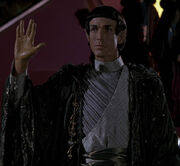
A Vulcan salute ( Star Trek: First Contact )
The Vulcan salute was a hand gesture used by Vulcans . It involved holding the palm of one hand outwards while placing the fingers in a "V" shaped by separating the middle and ring fingers, while keeping the others together, with the thumb extended.
- 2.1 Appearances
- 2.2.1 Origins
- 2.2.2 Serialization
- 2.2.3 Influence and other usage
- 2.3 External links
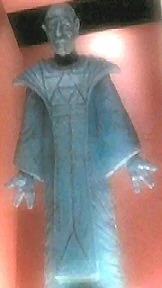
A statuette of Surak performing a version of the Vulcan salute
The salute was part of both Vulcan greetings and farewells. The formal phrase associated with the salute in both cases was " Live long and prosper. " ( Star Trek: First Contact ; TOS : " Amok Time ")
When parties took their leave of each other, one party could use the phrase " Peace and long life " and would receive " Live long and prosper " as a reply. ( TOS : " Is There in Truth No Beauty? ", " The Savage Curtain "; Star Trek IV: The Voyage Home ; TNG : " Sarek ", " Unification I "; Star Trek Beyond ) Alternately, each party could simply state to the other " Live long and prosper, (name). " ( TOS : " Amok Time "; Star Trek: Voyager various episodes)
In the Vulcan language , " Live long and prosper " was pronounced " Dif-tor heh smusma. " ( Star Trek: The Motion Picture )
In diplomatic situations, the greeting used was " I/We (depending on situation) come to serve, " possibly prefaced by the statement of the initiators' name. The response was " Your service honors us. " ( TOS : " Journey to Babel "; TNG : " Data's Day ", " Sarek ", " Unification I ")
In 2151 , a statuette of Surak performing the Vulcan salute with both hands was displayed aboard the Vahklas , a Vulcan ship. Unlike other Vulcan salutes, Surak's hands were not held upright. ( ENT : " Fusion ")
In February 2152 , Vulcan Ambassador V'Lar wished Sub-Commander T'Pol goodbye with the phrase " Live long and prosper. " T'Pol, however, bowed in response. ( ENT : " Fallen Hero ")
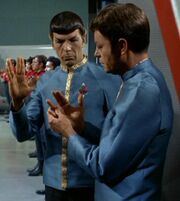
Spock shows McCoy how to do the salute
Several Humans greeted Vulcans with the hand gesture, including Captain Jonathan Archer in 2154 ( ENT : " Kir'Shara ") and Captain Jean-Luc Picard in 2368 . ( TNG : " Unification I ") T'Pol taught Trip Tucker the salute when she took him to Vulcan to meet her mother , T'Les . ( ENT : " Home ") Zefram Cochrane tried and failed to perform it in 2063 , during First Contact ; he settled on a handshake instead. ( Star Trek: First Contact ) Michael Burnham learned the salute from her brother, Spock, as a child. ( DIS : " Perpetual Infinity ") When Leonard McCoy attempted to perform the salute, he said it hurt worse than having to wear his dress uniform . ( TOS : " Journey to Babel ") The saying was quite well-known among those in Starfleet – in 2375 , trapped in the Delta Flyer under layers of rock, two minutes before the air would run out, Tuvok told Tom Paris , " In accepting the inevitable, one finds peace, " to which Paris responded that, if this was another Vulcan axiom, he would stick to " Live long and prosper. " Fortunately, Paris had barely finished the sentence when he was interrupted by the sound of USS Voyager 's phaser drills breaking through the rock , and those on board the Delta Flyer were safely beamed back to the ship. ( VOY : " Once Upon a Time ")
As a practical joke , Tom Paris and Harry Kim once reprogrammed Tuvok's security console so that it said, " Live long and prosper " whenever he accessed the internal sensors . They also reprogrammed his replicator the same way. ( VOY : " Revulsion ")
Ensigns Beckett Mariner and Brad Boimler occasionally used the gesture as a sarcastic jest with each other, or with other people. This is done by performing the gesture, then swinging that arm up and down by the elbow. ( LD : " Moist Vessel ", " Terminal Provocations ")
In 2383 , Dal R'El mistook the gesure for a high five when a hologram of Spock saluted him after he took Kobayashi Maru test multiple times. ( PRO : " Kobayashi ")
In 2384 , the crew of the USS Protostar encountered the Enderprizians : a species whose knowledge of Starfleet was outdated, incomplete, and often incorrect. They performed an erroneous interpretation of the Vulcan salute, which was made by separating the pinky and pointer fingers from the middle amd ring fingers – the latter two being kept together – and saying "Live logs and proper." Upon seeing Dal perform the correct gesture, however, Huur'A followed suit. ( PRO : " All the World's a Stage ")

In 2258 , in the alternate reality brought about by Nero 's incursion, Ambassador Spock , after speaking with a younger version of himself , made the hand gesture but said, " Good luck, " as he felt it would be "oddly self-serving" to say the usual phrase to his younger counterpart. ( Star Trek )
In 2263 of the alternate reality, the Vulcan salute was exchanged between the Spock who was indigenous to that universe and a pair of Vulcan messengers who had brought him news that Ambassador Spock was dead . Spock used the salute to bid farewell to the Vulcan pair on Starbase Yorktown , both Spock and his Vulcan visitors saying " Live long and prosper " to each other before the messengers walked away. ( Star Trek Beyond )
In the mirror universe , the first Vulcan to step on Terran soil used the traditional greeting before being shot by Zefram Cochrane , after he failed to duplicate the gesture. ( ENT : " In a Mirror, Darkly ") Thereafter, in the mirror universe, it was not safe, even behind closed doors , for Vulcans to perform the Vulcan salute, for fear that they might be seen by a Terran . ( ENT : " In a Mirror, Darkly, Part II ")
Appendices [ ]
Appearances [ ].
- " Amok Time "
- " Journey to Babel " (only gestured)
- " Assignment: Earth " (only said)
- " The Enterprise Incident " (only gestured)
- " Is There in Truth No Beauty? "
- " The Savage Curtain "
- TAS : " Yesteryear "
- Star Trek: The Motion Picture
- Star Trek II: The Wrath of Khan
- Star Trek III: The Search for Spock
- Star Trek IV: The Voyage Home
- Star Trek V: The Final Frontier (only gestured)
- Star Trek: First Contact
- Star Trek Into Darkness (only gestured)
- Star Trek Beyond
- " Conspiracy " (only gestured)
- " Data's Day " (only gestured)
- " Unification I "
- " Unification II "
- " Revulsion "
- " Year of Hell, Part II "
- " In the Flesh "
- " Once Upon a Time " (only said)
- " Counterpoint "
- " Gravity "
- " Riddles " (only said)
- " Live Fast and Prosper "
- " Shattered "
- " Homestead "
- " Fallen Hero " (only said)
- " Home " (only gestured)
- " The Forge "
- " Kir'Shara "
- " In a Mirror, Darkly "
- " In a Mirror, Darkly, Part II " (only gestured)
- " Battle at the Binary Stars "
- " The War Without, The War Within " (only gestured)
- " Light and Shadows " (only gestured)
- " If Memory Serves " (only gestured)
- " Such Sweet Sorrow, Part 2 " (only gestured)
- " Unification III "
- " Terra Firma, Part 2 " (only gestured)
- " Choose to Live "
- ST : " Ephraim and Dot "
- " Moist Vessel "
- " Terminal Provocations " (only gestured)
- " Much Ado About Boimler " (only gestured)
- " wej Duj "
- " Trusted Sources " (only gestured)
- " The Stars At Night " (only gestured)
- " Kobayashi "
- " All the World's a Stage " (only gestured)
- " Spock Amok " (only gestured)
- " All Those Who Wander "
- " Those Old Scientists "
Background information [ ]
Origins [ ].
The Vulcan salute was devised by Leonard Nimoy , based on a gesture made by various Jewish denominations, including Orthodox and Conservative. In TV Land's The 100 Greatest TV Quotes & Catchphrases , William Shatner described the salute as a benediction, comparing it to the Sign of the Cross . The gesture actually forms the Hebrew letter "Shin" and represents the honorific title "Shaddai", which means "Almighty (God)." The hand gesture is traditionally used by the Kohanim (Hebrew "priests"), Jews of priestly descent, during a blessing ceremony performed during the prayer service of certain Jewish holy days. The Jewish blessing is done with both hands, with arms extended upward at roughly a forty-five-degree angle, rather than one hand held upright as in the Vulcan salute. Nimoy learned the gesture, which takes practice to do, from visiting his grandfather's synagogue as a child. In the video William Shatner and Leonard Nimoy: The Twenty-Five Year Mission , Nimoy stated, " It took me years of diligent practice and self-denial to be able to do that. " [1]
The Vulcan salute wasn't originally in the script of " Amok Time ", which called for Spock to walk up to T'Pau followed by them simply exchanging brief greetings. Leonard Nimoy thought this might be a good chance to bring something unique to the Vulcan people. When he spoke to the episode's director, Nimoy suggested – citing examples of other gestures conveying greetings, such as handshakes, salutes, and bows – that perhaps Vulcans would greet each other with the Jewish gesture he remembered from his childhood, and the director agreed to try it. However, the actress playing T'Pau, Celia Lovsky , initially couldn't perform the salute, presenting a problem for the production personnel. They solved it by using a simple camera trick where her hands were below camera frame while she used one of her hands to get the other hand in the proper position. The salute was established from then on. According to an interview with Leonard Nimoy, the line " live long and prosper " was written by Theodore Sturgeon (the author of "Amok Time"). [2]
Serialization [ ]
William Shatner was unable to do the Vulcan salute. When Kirk (as played by Shatner) performs the salute in Star Trek III: The Search for Spock , it appears that fishing line holds two of his fingers together. In the video William Shatner and Leonard Nimoy: The Twenty-Five Year Mission , Shatner joked that the reason he couldn't do it was because, in Leonard Nimoy's words, it took "years of diligent practice and self-denial." During a June 2009 appearance on The Tonight Show with Conan O'Brien , Shatner demonstrated his inability to perform the salute, to which O'Brien responded with a perfect salute of his own.
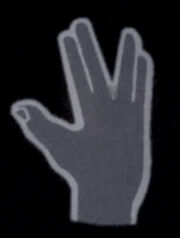
A sign of the M-9 language
As an in-joke , one of the gestures of the M-9 sign language is similar to the Vulcan salute. ( Star Trek Encyclopedia )
The first Vulcan to fail to perform the salute on screen was Sarek in TNG : " Unification I ", being terminally ill.
In the writers' second draft script of ENT : " Breaking the Ice ", Sub-Commander T'Pol and Captain Vanik exchanged Vulcan salutes, unaccompanied by any of the traditional Vulcan greetings. However, they don't exchange the salute (and their initial meeting is not shown) in the final version of that episode.
In the script of the 2009 film Star Trek , the Vulcan salute was described as "legendary". [3]
Influence and other usage [ ]
Armin Shimerman devised a Ferengi gesture inspired by the Vulcan hand salute. " I know that the Vulcan hand sign is universally recognized, " he commented. " I thought, 'Let's see if we can find something like that to do.' " ( Star Trek: Deep Space Nine Companion (p. 647))
Molly Hagan developed a Vorta greeting for Eris that was ultimately not used. She commented: " I immediately began working on a physical gesture that would indicate when I was using my telekinesis . I thought it could become the defining gesture of my people, like the Vulcan 'Live Long and proper' hand gesture . So, I came up with a motion where both my hands looked like they were taking energy in from my body before I pulsed it back out through my hands. It reminded me of something I saw Bruce Lee do. It never got used because a) they had great special effects and didn’t need me to do any gestures to sell 'my powers' and b) they were concerned that any future Vorta may not be able to replicate it. I was beyond disappointed ." [4]
The Filipino greeting "Mabuhay" can also be roughly translated as "live long and prosper" (it literally means "Live", but the expression is meant to convey a wish for someone to have a long and prosperous life in order to truly "live"). [5]
In Act 5, Scene 3, line 42, of Shakespeare's Romeo and Juliet , Romeo says to Balthasar, " Live, and be prosperous, and farwell good fellow. " [6]
It was proposed, accepted, and published in Version 7 of the Unicode Standard as Unicode Character U+1F596 (🖖 "RAISED HAND WITH PART BETWEEN MIDDLE AND RING FINGERS"). [7] [8]
A physician addressed a closed-door meeting of the US House Democratic caucus on 10 March 2020 where he "lightheartedly suggested" that people could employ the "live long and prosper sign" as a way to forgo handshakes and other physical forms of greeting during the outbreak of COVID-19. [9] [10]
On a 2022 episode of Who Do You Think You Are? , Zachary Quinto was surprised to see that his maternal great-grandfather P.J. McArdle had used the phrase May it live long and prosper in a letter published in the Official Organ of the Amalgamated Association of Iron, Steel and Tin Workers in 1899 . [11]
External links [ ]
- Vulcan salute at Wikipedia
- Vulcan salute at Memory Beta , the wiki for licensed Star Trek works
- The Jewish Origin of the Vulcan salute – a page by Rabbi Yonassan Gershom, with photos and diagrams of how the salute forms the Hebrew letter Shin, the use of the Blessing Hands gesture on Jewish gravestones and jewelry, etc.
- Names of God in Judaism at Wikipedia shows a clear illustration of the Judaic origin of the Vulcan salute
- 1 Star Trek: Discovery
What Is Spock's Star Trek Hand Sign Called & What Does It Mean?
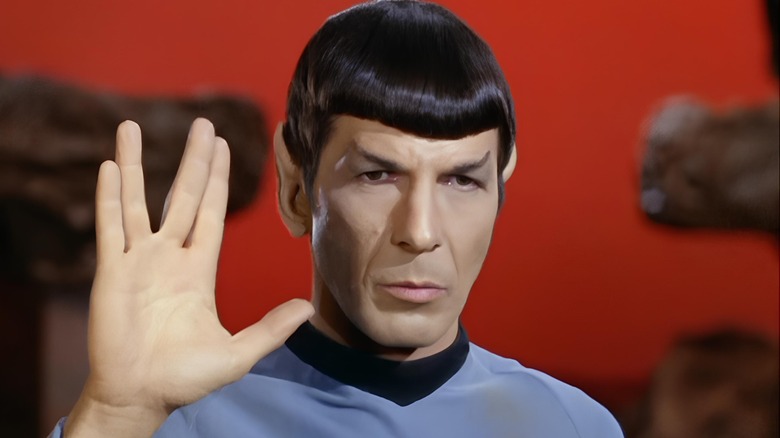
There is no more iconic hand gesture in pop culture than the split-fingered greeting used by Spock (Leonard Nimoy) and other Vulcans in "Star Trek." Usually accompanied by the phrase, "Live long, and prosper," the gesture requires splitting one's fingers between the middle and ring finger while extending the thumb, with the palm facing forward. But while many fans have seen it used throughout "Star Trek," many don't know its name, let alone its origins.
Spock's gesture is known as the Vulcan Salute. It was first seen in the episode "Amok Time," the episode of "Star Trek: The Original Series" in which Spock returns to Vulcan to compete in a mating ritual. Though not originally in the script for that episode, Nimoy felt it would be a good way to add more depth to Vulcan culture. "I suggested to the director that there should be some Vulcan thing that Vulcans do when they greet," Nimoy said in an Archive of American Television interview preserved by FoundationINTERVIEWS on YouTube. It was one of many aspects of Vulcan culture improvised by the actor . But the star clarified that the episode's writer, science fiction author Theodore Sturgeon, had come up with the phrase, "Live long, and prosper."
So, that's what the Vulcan Salute means within the universe of "Star Trek." But for Leonard Nimoy, it had a far more profound personal meaning rooted in his Jewish upbringing.
Leonard Nimoy's Vulcan Salute took inspiration from an ancient Jewish tradition
Leonard Nimoy, who played Spock on "Star Trek: The Original Series" and elsewhere, was raised in a Jewish household in Boston, Massachusetts, as the child of Ukrainian immigrants. His parents were observant, particularly his father, who brought his son along to High Holiday services at their local Orthodox synagogue. There, Nimoy witnessed a ritual that would go on to inform his Vulcan Salute.
Synagogue services on major holidays include the Priestly Blessing. Members of the priestly class of Kohanim — in the most simple terms, those with last names like Cohen and derivations thereof — bless the congregation by lifting their hands with the split-fingered gesture. The difference is that, in performing the Priestly Blessing, both hands are raised.
Crucially, members of the congregation are instructed to avert their gaze while the Blessing is recited, as the priests are said to be channeling the divine presence. Congregants often cover their faces with a tallis, a ritual shawl worn during prayer. But young Nimoy was much too curious to remain under the veil, so he would peer out at the Kohanim from under his father's tallis.
As noted on the Star Trek website, Nimoy wrote, "There were a group of five or six men facing the congregation and chanting in passionate shouts of a Hebrew benediction ... My dad said, 'Don't look.' ... I peeked. And when I saw the split-fingered gesture of these men ... I was entranced. I learned to do it because it seemed so magical. It was probably 25 years later that I introduced that gesture as a Vulcan greeting in 'Star Trek' and it has resonated with fans around the world ever since. It gives me great pleasure since it is, after all, a blessing."
- The Inventory
Support Quartz
Fund next-gen business journalism with $10 a month
Free Newsletters
The history behind Leonard Nimoy’s Vulcan salute
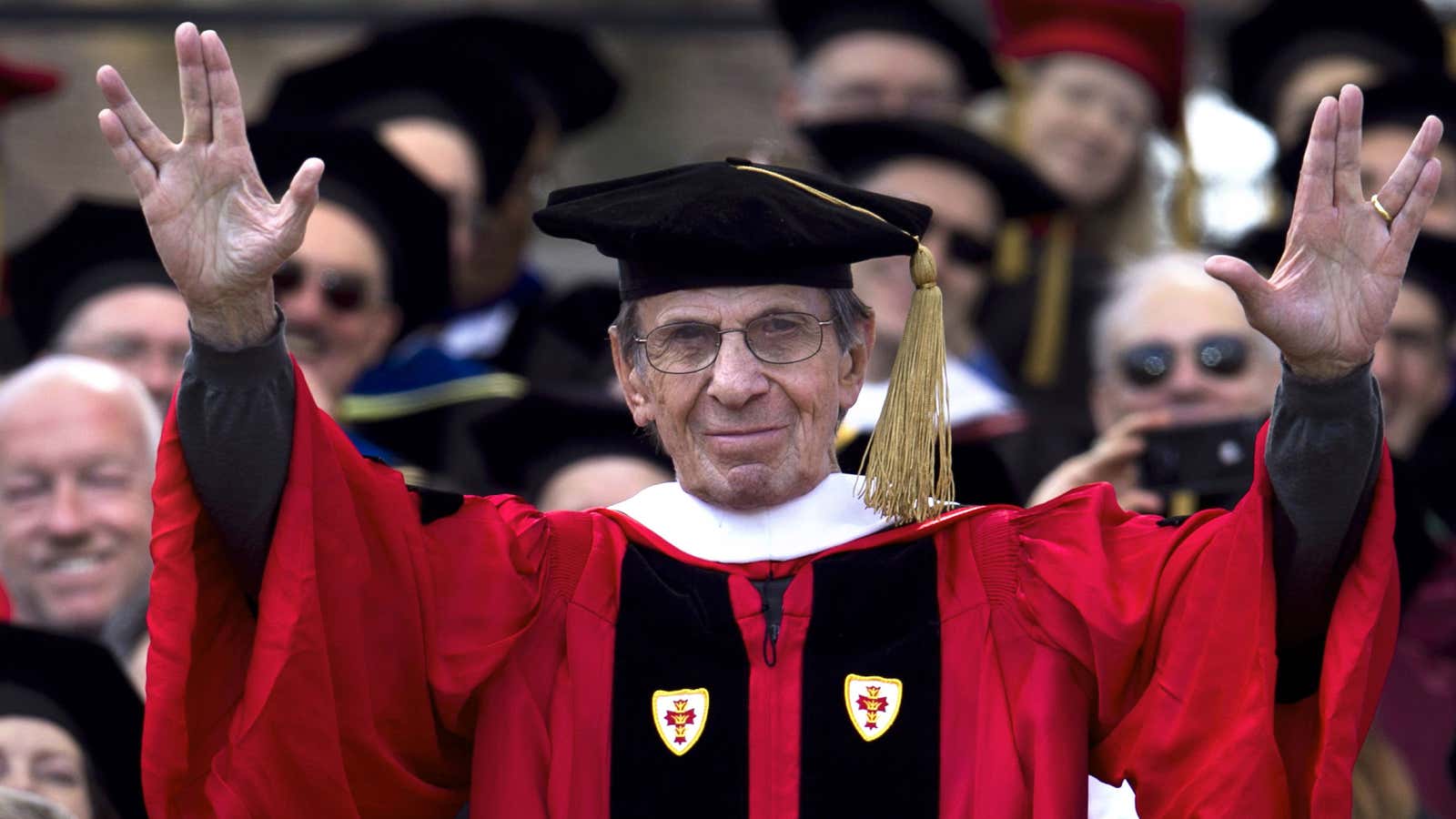
Leonard Nimoy’s passing at the age of 83 is prompting a flood of reminiscences about the actor, artist, and poet best known for his portrayal of the half-human/half-Vulcan Spock on the television series and movies Star Trek .
Many will remember him performing his trademark four-finger Vulcan salute, which the actor actually created himself:
Nimoy drew on his orthodox Jewish upbringing to invent the iconic hand gesture, and he wrote about the process of finding it in his memoir, I am Spock :
For what would soon become known as the Vulcan salute, I borrowed a hand symbol from Orthodox Judaism. During the High Holiday services, the Kohanim (who are the priests) bless those in attendance. As they do, they extend the palms of both hands over the congregation, with thumbs outstretched and the middle and ring fingers parted so that each hand forms two vees. This gesture symbolizes the Hebrew letter shin, the first letter in the word Shaddai, `Lord.’ … So it was that, when I searched my imagination for an appropriate gesture to represent the peace-loving Vulcans, the Kohanim’s symbol of blessing came to mind.
In a chat with the Baltimore Sun in 2000, Nimoy explained how he got the idea:
In the blessing, the Kohanim (a high priest of a Hebrew tribe) makes the gesture with both hands, and it struck me as a very magical and mystical moment. I taught myself how to do it without even knowing what it meant, and later I inserted it into “Star Trek.” There was a scene in one episode that needed something. People were seeing other members of the Vulcan race for the first time, and I thought it called for a special gesture.
📬 Sign up for the Daily Brief
Our free, fast, and fun briefing on the global economy, delivered every weekday morning.
The Canadian Jewish News The CJN
The jewish origins of the vulcan salute.
By Lindsay Traves
“Liv e long and prosper.” These words, along with the Vulcan salute, are immediately recognized and associated with Star Trek , which is celebrating the 53rd anniversary of its first episode this month. Their origins do not emanate from the vast final frontier, however, but rather from Leonard Nimoy’s Jewish heritage.
With Star Trek , Gene Roddenberry’s mission was to tell stories that included elements from a diversity of cultures, be they alien or Earthly. So when Leonard Nimoy had an idea for a Vulcan greeting, Roddenberry let him bring along a piece of his culture.
Nimoy recounted the story of Star Trek ’s Season 2 premiere, titled “Amok Time,” the first episode of the show where Spock visited the planet Vulcan (where he was to be married). It would be the first time another Vulcan would be seen on screen. After considering the greetings people have across cultures, Nimoy thought the Vulcans should have one of their own.
Though most of us immediately recognize the salute as the Vulcan greeting, its true origin comes directly from the Torah.
I met with Rabbi Howard Morrison of Beth Emeth Synagogue in Toronto, an expert on both Judaism and “nerd TV culture,” who told me more about the origin of the salute. “When the Kohanim do the priestly blessing, they take their two hands and bring the thumbs together and it’s like the ‘Live long and prosper’ sign,” he explained. But, Rabbi Morrison continued, the version in the blessing differs slightly: Spock “only does it on the show with the one hand,” he noted, “but the Kohanim , when they do the blessing, use two hands, and connect the thumbs to make the Hebrew letter shin (representing the first letter of one of God’s names).
The hand sign is done during the performance of the blessing by the Kohanim, who stand at the front of the sanctuary and bless the congregation. Historically, this was done daily in the Holy Temple, when it stood in Jerusalem. “You needed the Kohanim and their officiating to be able to fulfill certain Jewish practices,” Rabbi Morrison explained, adding, “Now, the blessing is done ‘symbolically’ by the Kohanim daily in Israel, and outside, during festivals.” (The words in the blessing itself are part of the daily prayers, but the sign we know as the Vulcan salute is only done when the Kohanim are called upon to stand before the congregation and recite them.
READ: SCHWARTZBERG: A TRIBUTE TO HARLAN ELLISON
Though Jewish fans of Star Trek might be thrilled by the revelation of something so deep in our culture, many of us have never seen the hand sign used in religious practice. Per Rabbi Morrison, “You’re not supposed to look when the Kohanim do the blessing and ‘salute,’ because you are supposed to be focusing on the words and thinking of God as opposed to focusing on the people saying the words.
“There are some who believe that if you look, you will go blind, but the idea is that the focus should be on hearing the words and internalizing the meaning of the words and not looking at the Kohanim who are doing it. But neither Nimoy or I could help ourselves – we peeked.” Indeed, the Spock actor recalled a time he attended synagogue and his father told him not to look when five or six men stepped to the bimah and began shouting a blessing. He knew something “major” was happening, so he snuck a view of those men with their hands poking out from their tallitot in a striking hand sign that he thought was “magical.” Years later, Nimoy would suggest this magical hand sign extend from his personal heritage to that of his character.
Though Nimoy could flash the sign with ease, not every Vulcan could. Celia Lovsky, who played T’Pau, the Vulcan minister, was unable to do the sign on her own and had her fingers taped together for production. Zachary Quinto allegedly had some trouble with the salute and did some Vulcan finger exercises while preparing for his most logical role. It was said his fingers were glued together for production, but Quinto swears this is just a rumour. Though I can’t say for sure, I have a suspicion that Arlene Martel, who played Spock’s bride-to-be, T’Pring, a fellow eastern European Jew, could probably flash the sign with ease.
This story was originally published by StarTrek.com and CBS. It has been reprinted with permission.


To Boldly Explore the Jewish Roots of ‘Star Trek’
An exhibition at a Jewish cultural center has plenty of artifacts to delight Trekkies — but it also notes the Jewish origins of the Vulcan salute.
Credit... Alex Welsh for The New York Times
Supported by
- Share full article

By Adam Nagourney
- Jan. 4, 2022
LOS ANGELES — Adam Nimoy gazed across a museum gallery filled with “Star Trek” stage sets, starship replicas, space aliens, fading costumes and props (think phaser, set to stun). The sounds of a beam-me-up transporter wafted across the room. Over his shoulder, a wall was filled with an enormous photograph of his father — Leonard Nimoy, who played Spock on the show — dressed in his Starfleet uniform, his fingers splayed in the familiar Vulcan “live long and prosper” greeting.
But that gesture, Adam Nimoy noted as he led a visitor through this exhibition at the Skirball Cultural Center , was more than a symbol of the television series that defined his father’s long career playing the part-Vulcan, part-human Spock. It is derived from part of a Hebrew blessing that Leonard Nimoy first glimpsed at an Orthodox Jewish synagogue in Boston as a boy and brought to the role.
The prominently displayed photo of that gesture linking Judaism to Star Trek culture helps account for what might seem to be a highly illogical bit of programming: the decision by the Skirball, a Jewish cultural center known mostly for its explorations of Jewish life and history, to bring in an exhibition devoted to one of television’s most celebrated sci-fi shows.
But walking through the artifacts Adam Nimoy recalled how his father, the son of Ukrainian Jews who spoke no English when they arrived, had said he identified with Spock, pointing out that he was “the only alien on the bridge of the Enterprise.”

Jewish values and traditions were often on the minds of the show’s writers as they dealt with issues of human behavior and morality, said David Gerrold, a writer whose credits include “The Trouble with Tribbles,” one of the most acclaimed “Star Trek” episodes, which introduces the crew to a cute, furry, rapidly reproducing alien life form.
“A lot of Jewish tradition — a lot of Jewish wisdom — is part of ‘Star Trek,’ and ‘Star Trek’ drew on a lot of things that were in the Old Testament and the Talmud,” Gerrold said in an interview. “Anyone who is very literate in Jewish tradition is going to recognize a lot of wisdom that ‘Star Trek’ encompassed.”
That connection was not explicit when the show first aired. And a stroll through the exhibition, which covers the original television show as well as some of the spinoffs and films that came to encompass the “Star Trek” industry, mainly turns up items that are of interest to “Star Trek” fans. There is a navigation console from the U.S.S. Enterprise, the first script from the first episode, a Klingon disrupter from “Star Trek: The Next Generation,” and a display of tribbles .
To some extent, the choice of this particular exhibition — “Star Trek: Exploring New Worlds” — to help usher the Skirball back into operation after a Covid shutdown reflects the imperatives museums everywhere are facing as they try to recover from a pandemic that has been so economically damaging. “These days — honestly, especially after the pandemic — museums are looking for ways to get people through the door,” said Brooks Peck, who helped create the show for the Museum of Pop Culture in Seattle. “Museums are struggling to find an audience and are looking for a pop culture hook.”
It seems to have worked. The “Star Trek” exhibition has drawn 12,000 attendees in its first two months here, a robust turnout given that the Skirball is limiting sales to 25 percent of capacity.
“This has been bringing in new people, no question,” said Sheri Bernstein, the museum director. “Attendance is important for the sake of relevance. It’s important for us to bring in a diverse array of people.”
Jessie Kornberg, the president of Skirball, said that the center had been drawn by the parallels between Judaism and the television show. “Nimoy’s Jewish identity contributed to a small moment which became a big theme,” she said. “We actually think the common values in the ‘Star Trek’ universe and Jewish belief are more powerful than that symbolism. That’s this idea of a more liberal, inclusive people, where ‘other’ and ‘difference’ is an embraced strength as opposed to a divisive weakness.”
The intersections between the television series and Judaism begin with its two stars, Nimoy and William Shatner , who played Capt. James T. Kirk. “These are two iconic guys in outer space who are Jewish,” said Adam Nimoy. And it extends to the philosophy that infuses the show, created by Gene Roddenberry, who was raised a Southern Baptist but came to consider himself a humanist , according to his authorized biography.
Those underlying connections are unmistakable for people like Nimoy, 65, a television director who is both a devoted “Star Trek” fan and an observant Jew: He and his father often went to services in Los Angeles, and Friday night Sabbath dinners were a regular part of their family life.
Nimoy found no shortage of Jewish resonances and echoes in the exhibition, which opened in October and closes on Feb. 20. He stopped at a costume worn by a Gorn , a deadly reptilian extraterrestrial who was in a fight-to-the-death encounter with Kirk.
“When he gets the Gorn to the ground, he’s about to kill him,” Nimoy recounted. “The Gorn wants to kill Kirk. But something happens. Instead he shows mercy and restraint and refuses to kill the Gorn.”
“Very similar to the story of Joseph,” Nimoy said, referring to the way Joseph, in the biblical book of Genesis, declined to seek retribution against his brothers for selling him into slavery.
Leonard Nimoy died in 2015 at the age of 83. Shatner, who is 90 and recently became the oldest person to go into space , declined to discuss the exhibition. “Unfortunately Mr. Shatner’s overcommitted production schedule precludes him from taking on any additional interviews,” said his assistant, Kathleen Hays.
The Skirball Cultural Center is set on 15 acres, about 20 miles from downtown Los Angeles.
The exhibition ran for about two years in Seattle after opening in 2016 to coincide with the 50th anniversary of the original “Star Trek” TV show’s 1966 debut. (That version was on NBC for three seasons.) The exhibition had been intended to tour, but those plans were cut short when the pandemic began to close museums across the country.
The exhibition was assembled largely from the private collection of Paul Allen, the co-founder of Microsoft and founder of the Museum of Pop Culture, who died in 2018.
Peck said he wanted to commemorate the anniversary of the series with an exhibition that explored the outsize influence the television show had on American culture. “The answer that I am offering is that ‘Star Trek’ has endured and inspired people because of the optimistic future it presents — the good character of many of its characters,” Peck said. “They are characters that people would like to emulate.”
“Skirball faced a bit of a challenge in trying to explain to its audience how ‘Star Trek' fit in with what they do,” he said. “Happily it completely worked out. I had always hoped that Skirball could take it. Skirball’s values as an institution so align with the values of ‘Star Trek’ and the ‘Star Trek’ community.”
Bernstein, the Skirball director, said the exhibition seemed a particularly good way to help bring the museum back to life.
“There was never a better time to present this show than now,” she said. “We very much liked the idea of reopening our full museum offerings with a show that was about inspiring hope. A show that promised enjoyment.”
By spring, ‘Star Trek’ will step aside for a less surprising offering, an exhibition about Jewish delis, but for now, the museum is filled both with devotees of Jewish culture, admiring a Torah case from China, and Trekkies, snapping pictures of the captain’s chair that Kirk sat in aboard the Enterprise.
“There is no such thing as too much ‘Star Trek,’” Scott Mantz, a film critic, said as he began interviewing Adam Nimoy after a recent screening at the museum of “ For the Love of Spock ,” a 2016 documentary Nimoy had made about his father. A long burst of applause rose from his audience.
Adam Nagourney covers West Coast cultural affairs for The Times. He was previously the Los Angeles bureau chief and served eight years as the chief national political correspondent. He is the co-author of “Out for Good,” a history of the modern gay rights movement. More about Adam Nagourney
Explore More in TV and Movies
Not sure what to watch next we can help..
Maya Rudolph and Kristen Wiig have wound in and out of each other’s lives and careers for decades. Now they are both headlining an Apple TV+ comedy of wealth and status .
Nicholas Galitzine, known for playing princes and their modern equivalents, hopes his steamy new drama, “Mary & George,” will change how Hollywood sees him .
Ewan McGregor and Mary Elizabeth met while filming “Fargo” in 2017. Now married, they have reunited onscreen in “A Gentleman in Moscow.”
A reboot of “Gladiators,” the musclebound 1990s staple, has attracted millions of viewers in Britain. Is appointment television back ?
If you are overwhelmed by the endless options, don’t despair — we put together the best offerings on Netflix , Max , Disney+ , Amazon Prime and Hulu to make choosing your next binge a little easier.
Sign up for our Watching newsletter to get recommendations on the best films and TV shows to stream and watch, delivered to your inbox.
Advertisement

Screen Rant
Live long & prosper: star trek origin, response & more.
Star Trek: The Original Series icon Spock originated the Vulcan salute in the episode “Amok Time,” and it’s become a Star Trek mainstay ever since.
Star Trek: The Original Series icon Spock (Leonard Nimoy) originated the Vulcan salute in the season 2 episode “Amok Time,” and it’s become a Star Trek mainstay ever since. Spock was the only character held over from TOS 's original rejected pilot episode "The Cage," though Nimoy and series creator Gene Roddenberry reworked the character and the Vulcans to be an emotionless, logic-driven people. Nimoy's stoic Vulcan had immediate chemistry with the swashbuckling Captain James T. Kirk (William Shatner), forming one of the most iconic duos in all of science fiction and pop culture at large.
The Vulcan culture was likely the alien species that was most fully fleshed out on Star Trek: The Original Series , due in no small part to Spock's runaway popularity. With Kirk and Dr. Leonard "Bones" McCoy (DeForest Kelley) , Spock was part of the primary trio of TOS that dominated the show's storylines. Nimoy himself helped develop the hand gesture that would eventually become the universal sign for Star Trek love.
Spock's "Live Long And Prosper" Saying Explained
Spock's legendary catchphrase was first uttered in the Star Trek: The Original Series season 2 episode "Amok Time." The episode sees Spock suffering from Pon farr, the Vulcan biological mating cycle that affects males every seven years. Once he arrives on Vulcan, Spock's betrothed T'Pring (Arlene Martel) , no longer wishing to mate with Spock, manipulates the mentally incapacitated USS Enterprise Science Officer into a deadly confrontation with Captain Kirk. Believing he murdered Kirk, Spock utters the "live long and prosper" motto to T'Pring and the collected Vulcans, noting that he will likely do neither now that he's seemingly killed his Captain. Kirk, of course, would be just fine.
"Amok Time" writer Theodore Sturgeon is credited with coming up with the exact wording of the Vulcan blessing. Similar sayings had existed in human culture for centuries, from the ancient Egyptians to the plays of William Shakespeare. Sturgeon's exact phrasing would go on to become a part of the pop culture lexicon.
Spock's Vulcan Salute Explained
Also debuting in the Star Trek: The Original Series season 2 episode "Amok Time," the Vulcan salute would become one of the most universally recognized aspects of Star Trek . The Vulcan salute had its origins in Leonard Nimoy's childhood. Early in life, Nimoy witnessed a Jewish priest performing a blessing with the hand gesture he would eventually adapt for Spock. The Vulcan salute eventually became so ubiquitous it was added to most default emoji programs.
The Vulcan salute not only became an important aspect of Spock, but it was integrated into all of Vulcan society, who Nimoy decided would rely on several different hand signals as a culture. The Vulcan salute would go on to appear in virtually every iteration of the franchise over the years. Star Trek: The Original Series' cast and crew likely had no idea they were creating a cultural phenomenon, but that's true for plenty of aspects of the legendary series.
- Celebrities
- Secret Invasion
- The Marvels
- Disney Plus
- Apple TV Plus
- Dwayne Johnson
- Brie Larson
- Ryan Reynolds
- The Witcher
- About & Advertising
- Privacy Policy
How did the Vulcan salute originate in ‘Star Trek?’
The V-shaped Vulcan salute was first introduced in “ Amok Time ” — an Original Series episode beloved by Star Trek fans. In it, Spock undergoes Pon Farr (the Vulcan urge to mate) and must return to his home planet to be married. On Vulcan, he meets T’Pau , a powerful Vulcan politician who will officiate the ceremony.
Leonard Nimoy , the actor who played Spock, wanted to come up with a special greeting infused with hidden meaning during the scene. As a boy, he had attended a Synagogue and was fascinated with the rituals performed there.
“There were a group of five or six men facing the congregation and chanting… My Dad said, ‘Don’t look.’ I learned later that it is believed that during this prayer the feminine aspect of God comes into the temple to bless the congregation. The light from this Deity could be very damaging. So we are told to protect ourselves by closing our eyes. I peeked. And when I saw the split-fingered gesture of these men… I was entranced. I learned to do it simply because it seemed so magical. It was 25 years later that I introduced that gesture as a Vulcan greeting in Star Trek and it has resonated with fans around the world ever since.”
Nimoy decided that a form of words should go with the hand gesture. The original Hebrew blessing was “May the Lord bless you and keep you.” Theodore Sturgeon, writer of “Amok Time,” quickly improvised a short line of dialogue that has since gone down in history — “Live long and prosper.”
A challenge for some
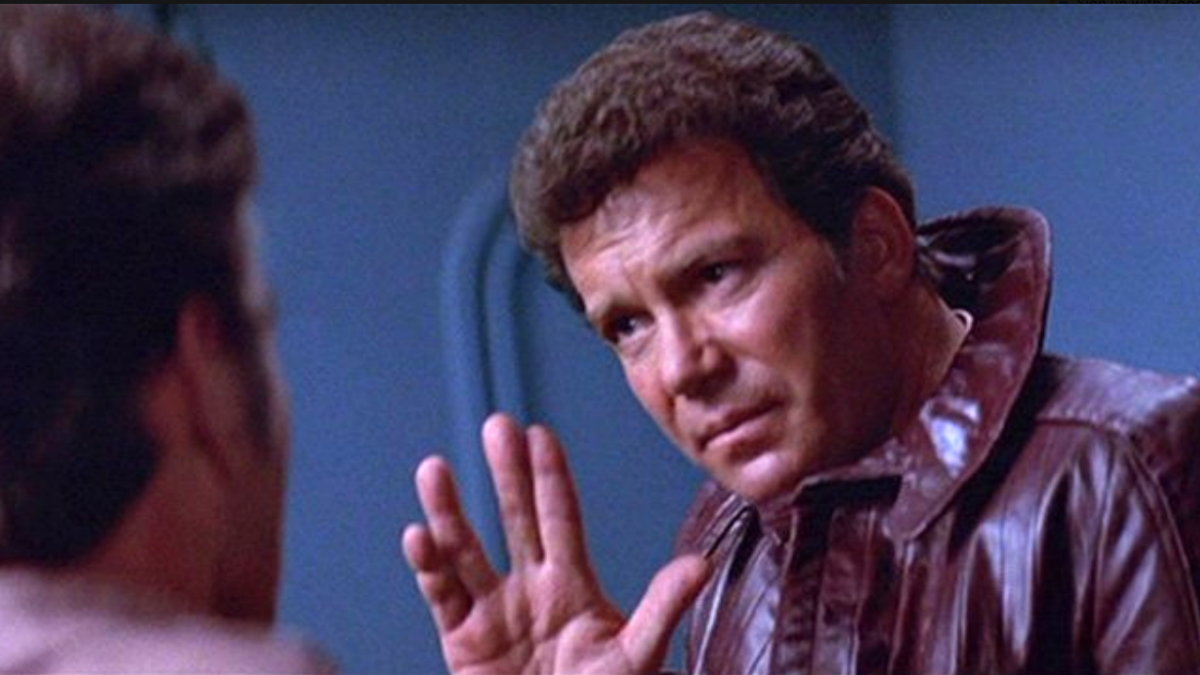
Now both the gesture and the words have become one of the most iconic parts of Trek lore, imitated by Trekkies the world over. But not everyone can perform the salute as effortlessly as Nimoy could. Co-star William Shatner reportedly has great difficulty performing the salute. In Star Trek III: The Search for Spock , a scene called for him to make the legendary hand gesture, and eagle-eyed fans have since spotted a near-invisible fishing line holding two of the actor’s fingers together.
Another actor who had trouble was Zachary Quinto, who played Spock in the Kelvin timeline films. On the set of Star Trek (2009), the crew was frantically searching for a method to allow Quinto to perform the gesture until someone came to the rescue with a tube of skin-protective super-glue .
Regardless of how difficult it is for some, the Vulcan salute remains an enduring part of Leonard Nimoy’s legacy.
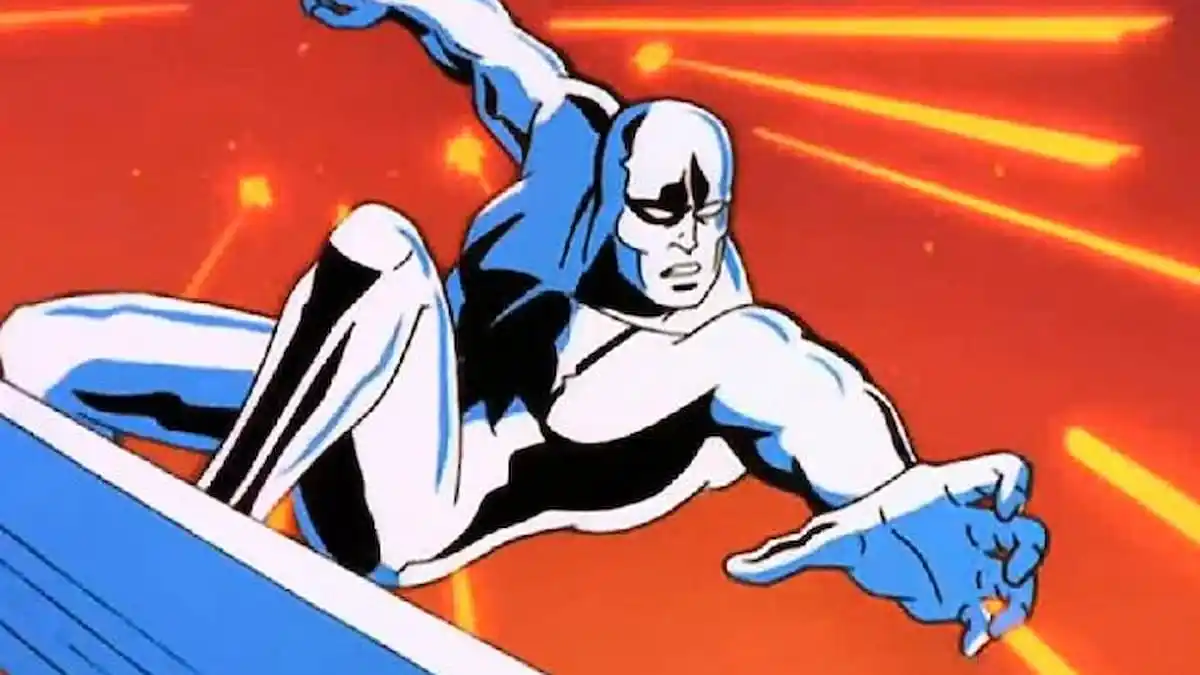

How Star Trek's Vulcans Evolved Beyond Gene Roddenberry's Creation
While the in-universe history of the Vulcans in Star Trek is epic, the behind-the-scenes saga of their creation and development is equally important.
Quick Links
Creating the vulcans in the original series era of star trek, the vulcans stay at arm's length during the next generation era, how star trek: enterprise reimagined the vulcans and history with humanity, the vulcans and romulans are living in the days of futures past.
When Gene Roddenberry was first creating his " Wagon Train to the stars" in 1964, the Vulcans were the first alien species he created during development. Personified by Mister Spock (played by Leonard Nimoy), these logical humanoids were imagined with pointed ears, green blood and, most importantly, no emotions. However, Nimoy, other actors and writers all contributed behind the scenes to making Vulcans the most important aliens in Star Trek history. What's interesting about the Vulcans is that along with being a logical and scientific people, they are also deeply spiritual and ritualistic. This seems a bit like an incongruity, especially knowing how adamant Roddenberry was about humanism over religion.
Later storytellers helped reconcile these two facets of the Vulcan culture by fleshing out the species' history. Along with strong psychic abilities, the Vulcans are not emotionless. Rather, they have very intense and destructive emotions, far different from their human cousins. Thus, ritualism and spirituality are the "scientific method" they use to suppress their emotions in healthy and constructive ways. In the modern, third wave of Star Trek series, the Vulcan culture continues to be examined with storytellers continuing to build on the foundation laid by Roddenberry, D.C. Fontana, Star Trek's "other" Gene , Nimoy and everyone from set designers to costumers.
'The Phone Didn't Ring': Walter Koenig Reflects on Career Struggles After Star Trek
When developing the first Star Trek pilot in 1964, Gene Roddenberry hadn't fully fleshed out the idea of what the Vulcans were. Vulcans existed only so far as making Spock half-human. "I wanted part of him to be at war with the other, the human part and the alien part," he said in The Fifty-Year Mission by Edward Gross and Mark A. Altman. Later, when developing the second Star Trek pilot, thanks to Lucille Ball , Roddenberry combined Spock's character with the "computer-mind qualities" of Number One, the woman First Officer discarded in the second version. That's how they became unemotional and logic-based.
In The Making of Star Trek by Roddenberry and Stephen E. Whitfield, the former envisioned that, despite the multispecies Federation, crews would be mostly human, Vulcan or other member species. As Spock became Star Trek 's central character , more stories about his people were created. Sarek, his father, was brought into the show. The classic Season 2 episode "Amok Time" introduced the Vulcan homeworld, while also establishing that Vulcans, while logical, were almost irrationally private about their most basic biological functions.
Leonard Nimoy was also essential to defining who the Vulcans were. He created the infamous Vulcan neck pinch and the salute, drawn from his Jewish heritage. Later, in the films, he would weigh in on Vulcan culture, defining it exclusively once he started directing. In The Center Seat - 55 Years of Star Trek , actor Robin Curtis who played Saavik described how Nimoy created the "love scene" between her and the reanimated Spock going through his first Pon Farr. Set and costume designers tried to marry the ideas Vulcans were scientific and logical as well as an ancient society. Their robes, ceremonial accessories and mostly stone structures were born from this notion.
9 Things About Star Trek: The Original Series That Make No Sense
When Gene Roddenberry was asked by Paramount to develop Star Trek: The Next Generation he turned to many of his collaborators from the days of the original series. Robert H. Justman, Dorothy Fontana, David Gerrold and others came back to help, though they didn't last long on the series. While many concepts from The Original Series were reused for The Next Generation , Roddenberry didn't want to include too many familiar elements. Primarily, this meant the Vulcans. There were no regular Vulcan characters in any of the second-wave series until Tuvok in Star Trek: Voyager .
Despite the lack of regular Vulcan characters, there was significant advancement to the Vulcan story. The first came in Season 3's "Sarek," in which it's revealed that Vulcans live hundreds of years longer than humans. This episode also introduced what writer Marc Cushman called "the idea of a Vulcan going through senility," in The Fifty-Year Mission . Roddenberry liked the idea, but in the same book writer Ira Steven Behr reveals there was a massive fight with producers over whether they could even say Spock's name. Later, Paramount would convince Nimoy to bring Spock to Star Trek: The Next Generation to "pass the baton" and promote Star Trek VI: The Undiscovered Country.
The episode featured Spock seemingly defecting from the Federation to the Romulan Star Empire. Only he wasn't defecting. Spock wanted to bring the logic philosophy of Surak to Romulus in the hopes of reunifying the Romulans and the Vulcans into a single society again. Some fans felt the episode was too small, and executive producer Michael Piller said he was unhappy with his work on the episode. He called the episode "dark," "flat" and "talky" in The Fifty-Year Mission . In hindsight, it's a love swan song for the Spock character. He shares a lovely scene with Data, and his final mission puts him on a path to making the last great enemy of his time in Starfleet an ally.
Star Trek The Next Generation: When Does TNG Get Good?
Every new iteration of Roddenberry's universe since Star Trek: The Animated Series has been met with skepticism, and in some cases, outright hostility from fans. Star Trek: Enterprise perhaps received the most flak, in part because of how it depicted the pre-Federation history of the Vulcans and humans. Rather than dear friends, the Vulcans were antagonistic and did not trust the emotional humans to join the larger galactic society. Enterprise 's creators were trying to do something different without moving things too far from what makes Star Trek so identifiable.
Still, there were conflicts. Antoinette Stella recounted in The Fifty-Year Mission when an angry fan called Paramount to complain a Vulcan character lied. Her assistant, Juan Hernandez spoke to the fan, who pointed out Spock said Vulcans don't lie, quoting The Original Series . "And Juan took a beat and said, 'When Mr. Spock said that, he was lying." In fact, there are many examples of Spock lying, especially in The Undiscovered Country . The Enterprise storytellers made Vulcans more complete by showing they had the same kind of idiosyncrasies and character flaws as any group of people .
The showrunner for season 4, Manny Coto , helped to reconcile the Vulcans of Enterprise with the Vulcans fans knew. " I thought there was a great opportunity to do [a series of episodes] which bridged those two cultures and to develop a story about how they'd floundered from the original teachings of Surak ," he said in The Fifty-Year Mission . Not only did it help explain why these Vulcans seemed so different, it also underscored why Vulcans and humanity would be close allies while still maintaining the elements of secrecy and tension established in previous series.
Review: Discovery's Final Season Is a Bittersweet Star Trek Symphony
The third wave of series -- particularly Star Trek: Discovery and Star Trek: Strange New Worlds -- faced fan consternation as well, particularly because of their handling of Vulcan history. Michael Burnham, played by Sonequa Martin-Green, was conceived as Spock's adopted sister, raised by Sarek and Amanda Grayson after her parents died. This gave viewers a new angle on Vulcan culture, from "logic extremists" to a reunified Vulcan and Romulan society in the 32nd Century . The producers know that Vulcans are extremely important to Star Trek , so they want to both honor the past and advance their story, justifying the use of the characters.
The best development to come of this is fixing the biggest mistake of the Kelvin Timeline films . The time-travel convention used to bring Nimoy's Spock into the past inadvertently meant his final mission was a failure. Yet, by the 32nd Century, Spock's mission to unify Vulcan and Romulans is a success, and they fully credit him for the development. This was an important element for Discovery Season 3, according to showrunner Michelle Paradise , allowing Burnham to discover just how far her adopted brother reached out to the galaxy.
In Strange New Worlds , however, some of the Vulcan cultural developments happen as they did in The Original Series era: out of story necessity. For example, the Vulcan V'Shal ritual "purely came out of [writers] breaking the story," co-showrunner Henry Alonso Meyers said . While the storytellers wanted to keep it authentic to Vulcan culture, it was created because it was funny to put Spock through a "when he's 'pretending' to be Vulcan" scenario. The danger of treating Star Trek Vulcans with too much regard for their sacred history is underserving the stories being told today . Thankfully, Star Trek has found that balance as it always does.
The Star Trek universe encompasses multiple series, each offering a unique lens through which to experience the wonders and perils of space travel. Join Captain Kirk and his crew on the Original Series' voyages of discovery, encounter the utopian vision of the Federation in The Next Generation, or delve into the darker corners of galactic politics in Deep Space Nine. No matter your preference, there's a Star Trek adventure waiting to ignite your imagination.
Live Long and Prosper Day
By rebekah 26 March 2024
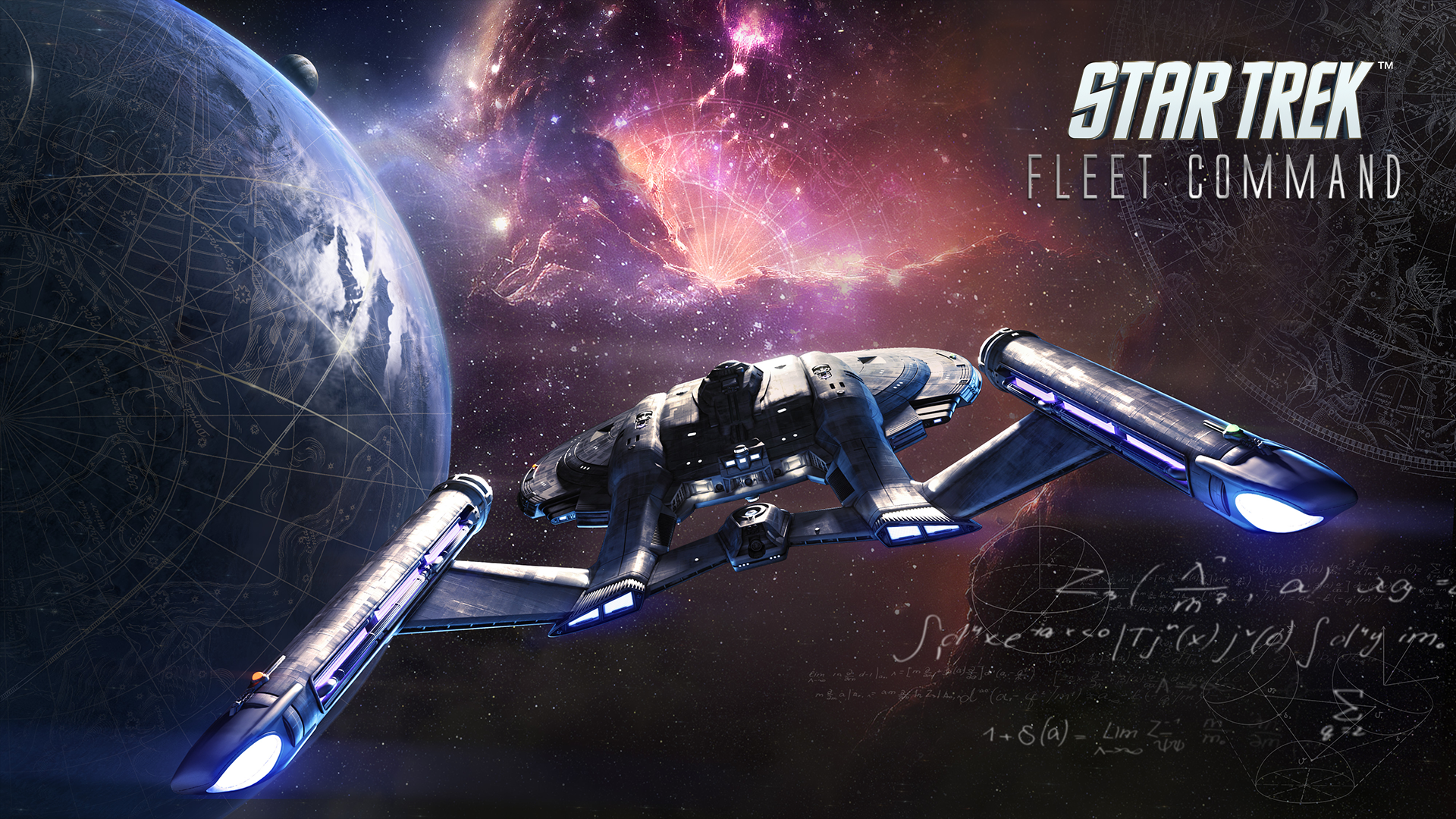
“Live long and prosper.” -Traditional Vulcan Salutation
Commanders, today marks the birthday of Leonard Nimoy, a pivotal figure whose legacy continues to illuminate the cosmos. Although Nimoy’s physical presence is no longer among us, since 2018, March 26th has been celebrated in his honor as Live Long and Prosper (LLAP) Day. In the spirit of LLAP Day, we extend our wishes of peace and long life to all of you.
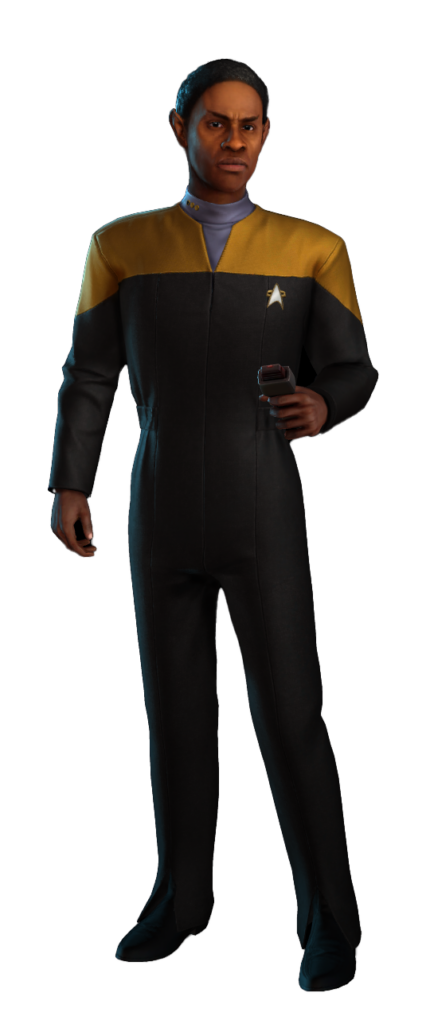
LLAP Day doesn’t prescribe a singular mode of celebration; rather, it encourages us to embody the ideals of Star Trek and foster behaviors that nurture longevity and prosperity. Whether through exercise, indulging in a healthy meal, or taking a mental health pause to decompress from life’s pressures, the essence of today is self-care and mindfulness. After all, logic dictates the importance of self-preservation.
The iconic Vulcan salute, paired with the phrase “live long and prosper,” debuted in the original series episode “Amok Time,” centering around Spock and his homeworld, Vulcan. Leonard Nimoy, deeply involved in crafting his character’s identity, introduced the salute—a gesture enriched by his childhood memories of Jewish religious ceremonies. During these rituals, a Rabbi would extend this hand formation while bestowing blessings of longevity and prosperity upon the congregation. Nimoy found it amusing that many of his colleagues struggled to naturally adopt the salute.
In an amusing anecdote from the episode “Amok Time,” Celia Lovsky, portraying the Vulcan T’Pau, had to have her fingers taped together to properly execute the salute in response to Nimoy’s. A similar predicament befell William Shatner in “Star Trek III: The Search for Spock.” Commanders, are you able to perform the salute without assistance?
Today, all Spocks Vulcan salute you, commander. Expect to see a little something from our Star Trek team in-game.
-The Star Trek Team
DON’t miss THESE from AROUND THE GALAXY
Update 64.1 patch notes, event: interspecies illnesses, event: build the universal translator.
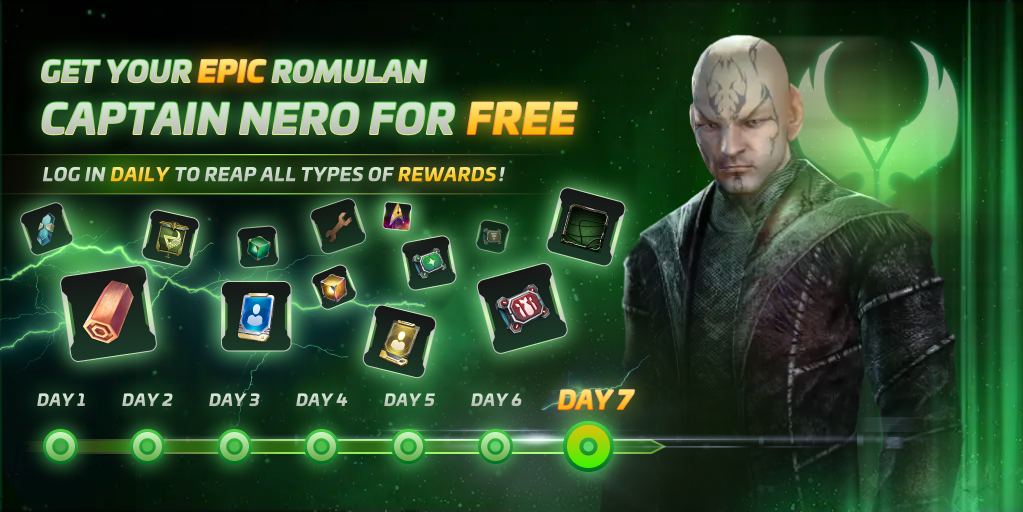
Begin Your Journey--Get a Free Unlock of an Epic Officer
Take the conn, download star trek fleet command today.
- AVAILABLE FOR -
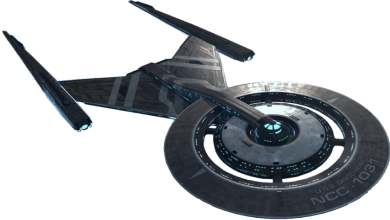
STAY INFORMED AND DON’T LOSE YOUR PROGRESS!
Subscribe for exclusive updates on our launches & more! Sync your progress across platforms and devices
The Future of ‘Star Trek’: From ‘Starfleet Academy’ to New Movies and Michelle Yeoh, How the 58-Year-Old Franchise Is Planning for the Next Generation of Fans
“I can’t believe I get to play the captain of the Enterprise.”
“Strange New Worlds” is the 12th “Star Trek” TV show since the original series debuted on NBC in 1966, introducing Gene Roddenberry’s vision of a hopeful future for humanity. In the 58 years since, the “Star Trek” galaxy has logged 900 television episodes and 13 feature films, amounting to 668 hours — nearly 28 days — of content to date. Even compared with “Star Wars” and the Marvel Cinematic Universe, “Star Trek” stands as the only storytelling venture to deliver a single narrative experience for this long across TV and film.
In other words, “Star Trek” is not just a franchise. As Alex Kurtzman , who oversees all “Star Trek” TV production, puts it, “‘Star Trek’ is an institution.”
Without a steady infusion of new blood, though, institutions have a way of fading into oblivion (see soap operas, MySpace, Blockbuster Video). To keep “Star Trek” thriving has meant charting a precarious course to satisfy the fans who have fueled it for decades while also discovering innovative ways to get new audiences on board.
“Doing ‘Star Trek’ means that you have to deliver something that’s entirely familiar and entirely fresh at the same time,” Kurtzman says.
The franchise has certainly weathered its share of fallow periods, most recently after “Nemesis” bombed in theaters in 2002 and UPN canceled “Enterprise” in 2005. It took 12 years for “Star Trek” to return to television with the premiere of “Discovery” in 2017; since then, however, there has been more “Star Trek” on TV than ever: The adventure series “Strange New Worlds,” the animated comedy “Lower Decks” and the kids series “Prodigy” are all in various stages of production, and the serialized thriller “Picard” concluded last year, when it ranked, along with “Strange New Worlds,” among Nielsen’s 10 most-watched streaming original series for multiple weeks. Nearly one in five Paramount+ subscribers in the U.S. is watching at least one “Star Trek” series, according to the company, and more than 50% of fans watching one of the new “Trek” shows also watch at least two others. The new shows air in 200 international markets and are dubbed into 35 languages. As “Discovery” launches its fifth and final season in April, “Star Trek” is in many ways stronger than it’s ever been.
“’Star Trek’s fans have kept it alive more times than seems possible,” says Eugene Roddenberry, Jr., who executive produces the TV series through Roddenberry Entertainment. “While many shows rightfully thank their fans for supporting them, we literally wouldn’t be here without them.”
But the depth of fan devotion to “Star Trek” also belies a curious paradox about its enduring success: “It’s not the largest fan base,” says Akiva Goldsman, “Strange New Worlds” executive producer and co-showrunner. “It’s not ‘Star Wars.’ It’s certainly not Marvel.”
When J.J. Abrams rebooted “Star Trek” in 2009 — with Chris Pine, Zachary Quinto and Zoe Saldaña playing Kirk, Spock and Uhura — the movie grossed more than any previous “Star Trek” film by a comfortable margin. But neither that film nor its two sequels broke $500 million in global grosses, a hurdle every other top-tier franchise can clear without breaking a sweat.
There’s also the fact that “Star Trek” fans are aging. I ask “The Next Generation” star Jonathan Frakes, who’s acted in or directed more versions of “Star Trek” than any other person alive, how often he meets fans for whom the new “Star Trek” shows are their first. “Of the fans who come to talk to me, I would say very, very few,” he says. “‘Star Trek’ fans, as we know, are very, very, very loyal — and not very young.”
As Stapf puts it: “There’s a tried and true ‘Trek’ fan that is probably going to come to every ‘Star Trek,’ no matter what it is — and we want to expand the universe.”
Every single person I spoke to for this story talked about “Star Trek” with a joyful earnestness as rare in the industry as (nerd alert) a Klingon pacifist.
“When I’m meeting fans, sometimes they’re coming to be confirmed, like I’m kind of a priest,” Ethan Peck says during a break in filming on the “Strange New Worlds” set. He’s in full Spock regalia — pointy ears, severe eyebrows, bowl haircut — and when asked about his earliest memories of “Star Trek,” he stares off into space in what looks like Vulcan contemplation. “I remember being on the playground in second or third grade and doing the Vulcan salute, not really knowing where it came from,” he says. “When I thought of ‘Star Trek,’ I thought of Spock. And now I’m him. It’s crazy.”
To love “Star Trek” is to love abstruse science and cowboy diplomacy, complex moral dilemmas and questions about the meaning of existence. “It’s ultimately a show with the most amazing vision of optimism, I think, ever put on-screen in science fiction,” says Kurtzman, who is 50. “All you need is two minutes on the news to feel hopeless now. ‘Star Trek’ is honestly the best balm you could ever hope for.”
I’m getting a tour of the USS Enterprise from Scotty — or, rather, “Strange New World” production designer Jonathan Lee, who is gushing in his native Scottish burr as we step into the starship’s transporter room. “I got such a buzzer from doing this, I can’t tell you,” he says. “I actually designed four versions of it.”
Lee is especially proud of the walkway he created to run behind the transporter pads — an innovation that allows the production to shoot the characters from a brand-new set of angles as they beam up from a far-flung planet. It’s one of the countless ways that this show has been engineered to be as cinematic as possible, part of Kurtzman’s overall vision to make “Star Trek” on TV feel like “a movie every week.”
Kurtzman’s tenure with “Star Trek” began with co-writing the screenplay for Abrams’ 2009 movie, which was suffused with a fast-paced visual style that was new to the franchise. When CBS Studios approached Kurtzman in the mid-2010s about bringing “Star Trek” back to TV, he knew instinctively that it needed to be just as exciting as that film.
“The scope was so much different than anything we had ever done on ‘Next Gen,’” says Frakes, who’s helmed two feature films with the “Next Generation” cast and directed episodes of almost every live-action “Trek” TV series, including “Discovery” and “Strange New Worlds.” “Every department has the resources to create.”
A new science lab set for Season 3, for example, boasts a transparent floor atop a four-foot pool of water that swirls underneath the central workbench, and the surrounding walls sport a half dozen viewscreens with live schematics custom designed by a six-person team. “I like being able to paint on a really big canvas,” Kurtzman says. “The biggest challenge is always making sure that no matter how big something gets, you’re never losing focus on that tiny little emotional story.”
At this point, is there a genre that “Strange New Worlds” can’t do? “As long as we’re in storytelling that is cogent and sure handed, I’m not sure there is,” Goldsman says with an impish smile. “Could it do Muppets? Sure. Could it do black and white, silent, slapstick? Maybe!”
This approach is also meant to appeal to people who might want to watch “Star Trek” but regard those 668 hours of backstory as an insurmountable burden. “You shouldn’t have to watch a ‘previously on’ to follow our show,” Myers says.
To achieve so many hairpin shifts in tone and setting while maintaining Kurtzman’s cinematic mandate, “Strange New Worlds” has embraced one of the newest innovations in visual effects: virtual production. First popularized on the “Star Wars” series “The Mandalorian,” the technology — called the AR wall — involves a towering circular partition of LED screens projecting a highly detailed, computer-generated backdrop. Rather than act against a greenscreen, the actors can see whatever fantastical surroundings their characters are inhabiting, lending a richer level of verisimilitude to the show.
But there is a catch. While the technology is calibrated to maintain a proper sense of three-dimensional perspective through the camera lens, it can be a bit dizzying for anyone standing on the set. “The images on the walls start to move in a way that makes no sense,” says Mount. “You end up having to focus on something that’s right in front of you so you don’t fall down.”
And yet, even as he’s talking about it, Mount can’t help but break into a boyish grin. “Sometimes we call it the holodeck,” he says. In fact, the pathway to the AR wall on the set is dotted with posters of the virtual reality room from “The Next Generation” and the words “Enter Holodeck” in a classic “Trek” font.
“I want to take one of those home with me,” Peck says. Does the AR wall also affect him? “I don’t really get disoriented by it. Spock would not get ill, so I’m Method acting.”
I’m on the set of the “Star Trek” TV movie “Section 31,” seated in an opulent nightclub with a view of a brilliant, swirling nebula, watching Yeoh rehearse with director Olatunde Osunsanmi and her castmates. Originally, the project was announced as a TV series centered on Philippa Georgiou, the semi-reformed tyrant Yeoh originated on “Discovery.” But between COVID delays and the phenomenon of “Everything Everywhere All at Once,” there wasn’t room in the veteran actress’s schedule to fit a season of television. Yeoh was undaunted.
“We’d never let go of her,” she says of her character. “I was just blown away by all the different things I could do with her. Honestly, it was like, ‘Let’s just get it done, because I believe in this.’”
If that means nothing to you, don’t worry: The enormity of the revelation that Garrett is being brought back is meant only for fans. If you don’t know who the character is, you’re not missing anything.
“It was always my goal to deliver an entertaining experience that is true to the universe but appeals to newcomers,” says screenwriter Craig Sweeny. “I wanted a low barrier of entry so that anybody could enjoy it.”
Nevertheless, including Garrett on the show is exactly the kind of gasp-worthy detail meant to flood “Star Trek” fans with geeky good feeling.
“You cannot create new fans to the exclusion of old fans,” Kurtzman says. “You must serve your primary fan base first and you must keep them happy. That is one of the most important steps to building new fans.”
On its face, that maxim would make “Section 31” a genuine risk. The titular black-ops organization has been controversial with “Star Trek” fans since it was introduced in the 1990s. “The concept is almost antagonistic to some of the values of ‘Star Trek,’” Sweeny says. But he still saw “Section 31” as an opportunity to broaden what a “Star Trek” project could be while embracing the radical inclusivity at the heart of the franchise’s appeal.
“Famously, there’s a spot for everybody in Roddenberry’s utopia, so I was like, ‘Well, who would be the people who don’t quite fit in?’” he says. “I didn’t want to make the John le Carré version, where you’re in the headquarters and it’s backbiting and shades of gray. I wanted to do the people who were at the edges, out in the field. These are not people who necessarily work together the way you would see on a ‘Star Trek’ bridge.”
For Osunsanmi, who grew up watching “The Next Generation” with his father, it boils down to a simple question: “Is it putting good into the world?” he asks. “Are these characters ultimately putting good into the world? And, taking a step back, are we putting good into the world? Are we inspiring humans watching this to be good? That’s for me what I’ve always admired about ‘Star Trek.’”
Should “Section 31” prove successful, Yeoh says she’s game for a sequel. And Kurtzman is already eyeing more opportunities for TV movies, including a possible follow-up to “Picard.” The franchise’s gung-ho sojourn into streaming movies, however, stands in awkward contrast to the persistent difficulty Paramount Pictures and Abrams’ production company Bad Robot have had making a feature film following 2016’s “Star Trek Beyond” — the longest theaters have gone without a “Star Trek” movie since Paramount started making them.
First, a movie reuniting Pine’s Capt. Kirk with his late father — played in the 2009 “Star Trek” by Chris Hemsworth — fell apart in 2018. Around the same time, Quentin Tarantino publicly flirted with, then walked away from, directing a “Star Trek” movie with a 1930s gangster backdrop. Noah Hawley was well into preproduction on a “Star Trek” movie with a brand-new cast, until then-studio chief Emma Watts abruptly shelved it in 2020. And four months after Abrams announced at Paramount’s 2022 shareholders meeting that his 2009 cast would return for a movie directed by Matt Shakman (“WandaVision”), Shakman left the project to make “The Fantastic Four” for Marvel. (It probably didn’t help that none of the cast had been approached before Abrams made his announcement.)
The studio still intends to make what it’s dubbed the “final chapter” for the Pine-Quinto-Saldaña cast, and Steve Yockey (“The Flight Attendant”) is writing a new draft of the script. Even further along is another prospective “Star Trek” film written by Seth Grahame-Smith (“Abraham Lincoln: Vampire Hunter”) and to be directed by Toby Haynes (“Andor,” “Black Mirror: USS Callister”) that studio insiders say is on track to start preproduction by the end of the year. That project will serve as an origin story of sorts for the main timeline of the entire franchise. In both cases, the studio is said to be focused on rightsizing the budgets to fit within the clear box office ceiling for “Star Trek” feature films.
Far from complaining, everyone seems to relish the challenge. Visual effects supervisor Jason Zimmerman says that “working with Alex, the references are always at least $100 million movies, if not more, so we just kind of reverse engineer how do we do that without having to spend the same amount of money and time.”
The workload doesn’t seem to faze him either. “Visual effects people are a big, big ‘Star Trek’ fandom,” he says. “You naturally just get all these people who go a little bit above and beyond, and you can’t trade that for anything.”
In one of Kurtzman’s several production offices in Toronto, he and production designer Matthew Davies are scrutinizing a series of concept drawings for the newest “Star Trek” show, “Starfleet Academy.” A bit earlier, they showed me their plans for the series’ central academic atrium, a sprawling, two-story structure that will include a mess hall, amphitheater, trees, catwalks, multiple classrooms and a striking view of the Golden Gate Bridge in a single, contiguous space. To fit it all, they plan to use every inch of Pinewood Toronto’s 45,900 square foot soundstage, the largest in Canada.
But this is a “Star Trek” show, so there do need to be starships, and Kurtzman is discussing with Davies about how one of them should look. The issue is that “Starfleet Academy” is set in the 32nd century, an era so far into the future Kurtzman and his team need to invent much of its design language.
“For me, this design is almost too Klingon,” Kurtzman says. “I want to see the outline and instinctively, on a blink, recognize it as a Federation ship.”
The time period was first introduced on Season 3 of “Discovery,” when the lead character, Michael Burnham (Sonequa Martin-Green), transported the namesake starship and its crew there from the 23rd century. “It was exciting, because every time we would make a decision, we would say, ‘And now that’s canon,’” says Martin-Green.
“We listened to a lot of it,” Kurtzman says. “I think I’ve been able to separate the toxic fandom from really true fans who love ‘Star Trek’ and want you to hear what they have to say about what they would like to see.”
By Season 2, the “Discovery” writers pivoted from its dour, war-torn first season and sent the show on its trajectory 900-plus years into the future. “We had to be very aware of making sure that Spock was in the right place and that Burnham’s existence was explained properly, because she was never mentioned in the original series,” says executive producer and showrunner Michelle Paradise. “What was fun about jumping into the future is that it was very much fresh snow.”
That freedom affords “Starfleet Academy” far more creative latitude while also dramatically reducing how much the show’s target audience of tweens and teens needs to know about “Star Trek” before watching — which puts them on the same footing as the students depicted in the show. “These are kids who’ve never had a red alert before,” Noga Landau, executive producer and co-showrunner, says. “They never had to operate a transporter or be in a phaser fight.”
In the “Starfleet Academy” writers’ room in Secret Hideout’s Santa Monica offices, Kurtzman tells the staff — a mix of “Star Trek” die-hards, part-time fans and total newbies — that he wants to take a 30,000-foot view for a moment. “I think we need to ground in science more throughout the show,” he says, a giant framed photograph of Spock ears just over his shoulder. “The kids need to use science more to solve problems.”
Immediately, one of the writers brightens. “Are you saying we can amp up the techno-babble?” she says. “I’m just excited I get to use my computer science degree.”
After they break for lunch, Kurtzman is asked how much longer he plans to keep making “Star Trek.”
“The minute I fall out of love with it is the minute that it’s not for me anymore. I’m not there yet,” he says. “To be able to build in this universe to tell stories that are fundamentally about optimism and a better future at a time when the world seems to be falling apart — it’s a really powerful place to live every day.”
More From Our Brands
Bbc defends kate middleton cancer reporting after complaints of ‘excessive and insensitive’ coverage, this $48 million miami beach condo has 3,500 square feet of wraparound terracing, nc state booster club, nil collective riding final four gravy train , the best loofahs and body scrubbers, according to dermatologists, survivor’s [spoiler] on the ‘mergatory’ rock draw that sunk her game: ‘i was genuinely in shock’, verify it's you, please log in.
- More to Explore
- Series & Movies
Published Sep 24, 2014
Guest Blog: Nimoy Revisits The Creation of the Vulcan Salute
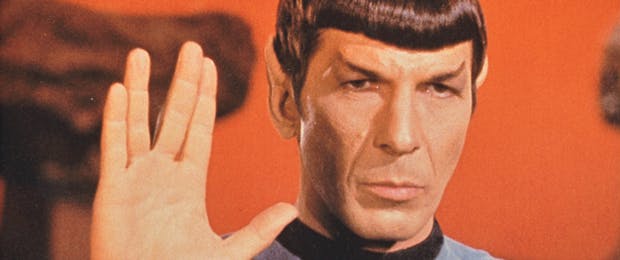
The Vulcan split-fingered greeting gesture remains one of the classic, defining, iconic images in Star Trek . It’s been seen repeatedly across the franchise, often accompanied by the words, “Live long and prosper.” Leonard Nimoy – borrowing a page from an ancient Jewish ritual he observed as a boy in his native Boston -- introduced the salute in The Original Series episode “ Amok Time ,” in a scene in which Spock greets T’Pau (Celia Lovsky), the Vulcan official who was to preside over his wedding to T’Pring (Arlene Martel). Nimoy had no idea at the time, as he stood on the set of “Amok Time” with Lovsky, William Shatner, DeForest Kelley and director Joseph Pevney, that he’d be setting a pop culture moment in motion, but that’s precisely what he did.
Three years ago, StarTrek.com asked Nimoy if, in time to celebrate the upcoming Jewish holidays of Rosh Hashanah and Yom Kippur, he would pen a firsthand account of what he saw as a child in synagogue that years later led him to create the greeting. To our great pleasure, the Star Trek legend agreed to do so for those fans who've never heard the story or never read about it in his autobiography. He also was kind enough to set up the context in which he raised the notion of the gesture to Pevney during the “Amok Time” shoot in 1967 and to address the oft-asked question of whether or not Star Trek creator Gene Roddenberry had any role in its creation or signed off on it. The guest blog proved so popular that we've made it a tradition to run it each year in time for the Jewish holidays.
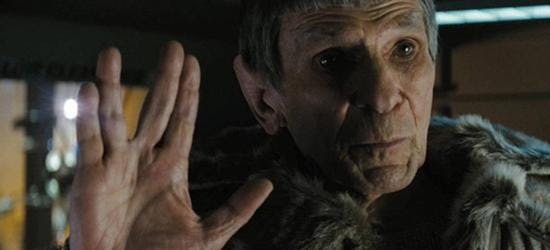
“The idea came when I saw the way Joe was staging the scene,” Nimoy told us. “He had me approach T'Pau and I felt a greeting gesture was called for. So I suggested it to Joe, who accepted it immediately. Gene was not involved.”
Now, to Nimoy’s account -- written by Nimoy exclusively for StarTrek.com -- of first seeing the Jewish blessing/benediction performed and to his thoughts on the Vulcan gesture’s enduring legacy:
I grew up in an interesting inner-city neighborhood in Boston. The area was known as the West End and was written about in a book called The Urban Villagers . It was a desirable area since it was within walking distance of downtown Boston and the Boston Commons, as well as being situated along the banks of the Charles River.
The population was mostly immigrants. Maybe 70% Italian and 25% Jewish. My family attended services in an Orthodox Jewish Synagogue, or “Shul.” We were especially attentive to the high holidays, Rosh Hashanah, the Jewish New Year, and Yom Kippur, the Day of Atonement.
Since I was somewhat musical, I was hired as a young boy to sing in choirs for the holidays and I was therefore exposed to all of the rituals firsthand. I still have a vivid memory of the first time I saw the use of the split-fingered hands being extended to the congregation in blessing.
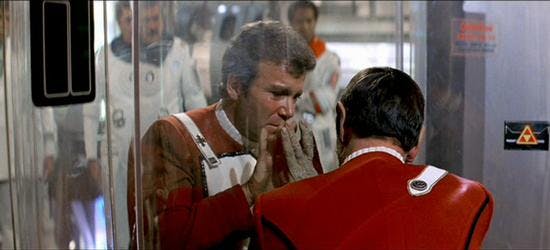
There were a group of five or six men facing the congregation and chanting in passionate shouts of a Hebrew benediction. It would translate to “May the Lord bless you and keep you,”…etc.
My Dad said, “Don’t look.”
I learned later that it is believed that during this prayer, the “Shekhina,” the feminine aspect of God comes into the temple to bless the congregation. The light from this Deity could be very damaging. So we are told to protect ourselves by closing our eyes.
And when I saw the split-fingered gesture of these men... I was entranced. I learned to do it simply because it seemed so magical.
It was probably 25 years later that I introduced that gesture as a Vulcan greeting in Star Trek and it has resonated with fans around the world ever since. It gives me great pleasure since it is, after all, a blessing.
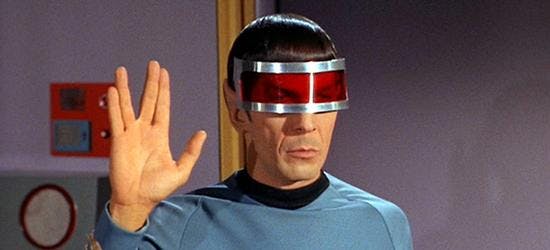
Live Long And Prosper,
Leonard Nimoy
Get Updates By Email
30+ of the Best Star Trek Memes of the Week (April 2, 2024)
For the life of me, I cannot do the Vulcan salute with my right hand. I can do the iconic hand gesture effortlessly with my left hand, which doesn't make any sense, seeing that I'm right-handed. Maybe if I'd spent more of my precious time on earth practicing putting my ring/pinky and pointer/middle fingers together, I wouldn't be in this predicament.
Luckily, I'm not alone in feeling like this gesture is, at best, difficult and, at worst, literally impossible. Many Star Trek cast members had difficulty doing the salute in the moment while on their respective Star Trek shows. Sometimes, actors would have to put their hands behind their back and painstakingly do the salute there before flashing it on camera. If you're a better Star Trek fan than I am, you can probably do the Vulcan salute lickety-split. If you're one of those dexterous stans, your hands will be put to great use scrolling through these Star Trek memes .
- Advertisement
Stay entertained and up to date by following us on Facebook and Instagram!
Next on memebase.
Follow The Laughs

Star Trek Officially Introduces the Father of Tasha Yar's Daughter Sela
- Sela's backstory is convoluted and tragic, as she struggles with her Romulan heritage and complex family ties--which have made her a popular Star Trek villain.
- General Revo's attempt to restore Sela's place in Romulan society is rejected, as she denies her Romulan bloodline.
- Sela's journey in Star Trek: Defiant reveals her transformation from villain to potential anti-hero, with conflicts and revelations.
Warning: contains spoilers for Star Trek: Defiant #13!
Star Trek has officially introduced the father of Sela, Tasha Yar’s half-Romulan daughter. In just a handful of episodes, Sela left a huge impression on fans, and she returned to the pages of IDW’s Star Trek: Defiant , briefly aligning herself with Worf and his crew. She eventually left them to pursue her own goals, and now, in Star Trek: Defiant #13, fans finally get to meet her mysterious father.
Star Trek: Defiant #13, part two of “Hell is Only a Word,” is written by Christopher Cantwell and drawn by Angel Unzueta. After drugging Martok and extracting information from him, Sela had been working on something so vital she had to go tell Worf. Sela learns the Defiant is at Starbase 99, and sets course, blatantly violating the Neutral Zone.
She is intercepted by her father, General Revo, who tries to warn her against doing so.
Revo also tells her he is willing to stake his reputation to restore hers–but she refuses, and leaves him behind.
Sela's Struggles Against Herself and the Federation Make Her One of Star Trek's Best Villains
Sela may be turning into an anti-hero.
Sela’s backstory is one of the most tragic, and convoluted, in Star Trek history. Her mother, Tasha Yar, was killed off in The Next Generation ’s first season, but was resurrected (thanks to time travel) in the third season episode “Yesterday’s Enterprise.” Again, thanks to time travel, this version went back into the past, where she was captured by Romulans. One of her captors “took mercy” on her, offering her freedom in exchange for marrying him. Sela was the product of this union, but Tasha was killed trying to escape a few years later, leaving her with no human influences.
Sela first appeared, in the shadows, in "The Mind's Eye," a fourth season episode of Star Trek: The Next Generation, before making her formal debut at the end of "Redemption Part One."
Without her mother, Sela grew up fully Romulan, and internalized their values and mores. Romulan society is built upon deception and violence, and Sela embodies these qualities. Her handful of on-screen appearances established she was ashamed of her human heritage as she spun her mother’s escape as folly. Her appearances in Star Trek: Defiant have fleshed Sela out further, showing her to be far more complex than fans thought. Sela has been slowly drifting to “anti-hero” status in Star Trek: Defiant , but not everyone is happy, including her father.
Tasha Yar's Daughter Is the Reason Spock's Vulcan/Romulan Reunification Worked, Star Trek Confirms
By denying her romulan heritage, sela has made star trek history, but will sela be able to follow through on her decision.
General Revo is a true, full-blooded Romulan, and it becomes clear from his interactions with Sela that she is having second thoughts about her Romulan identity. Sela once looked up to her father, but those times are now gone. In this issue, she rebukes her father, even after he promises to restore her place in Romulan society. In rejecting her father, Sela is also rejecting her Romulan heritage. While it remains to be seen if Sela will be successful in her journey in the Star Trek universe, it is clear she will be going without her father.
Star Trek: Defiant #13 is on sale now from IDW Publishing!


IMAGES
VIDEO
COMMENTS
Sci-fi. Star Trek. The Vulcan salute was a hand gesture used by Vulcans. It involved holding the palm of one hand outwards while placing the fingers in a "V" shaped by separating the middle and ring fingers, while keeping the others together, with the thumb extended. The salute was part of both Vulcan greetings...
Vulcan salute. The Vulcan salute is a hand gesture popularized by the 1960s television series Star Trek. It consists of a raised hand with the palm forward and the thumb extended, while the fingers are parted between the middle and ring finger. The gesture was devised by Star Trek actor Leonard Nimoy as a salute for the alien Vulcan species ...
Learn how the iconic split-fingered gesture of Spock and other Vulcans in "Star Trek" was created by actor Leonard Nimoy, who was influenced by a Jewish ritual called the Priestly Blessing. Find out what the Vulcan Salute means in the "Star Trek" universe and in Nimoy's personal life.
Learn how the Star Trek legend created the iconic Vulcan salute based on a Jewish ritual he saw as a boy. Read his personal account and the meaning behind the gesture.
That salute first appeared in the "Star Trek" episode "Amok Time" (September 15, 1967) and was accompanied by a notable Vulcan slogan, "Live long and prosper," initially penned by teleplay writer ...
Nimoy introduced the hand sign of the Kohanim Jewish blessing, which would become the Vulcan salute. In a project for the Yiddish Book Center, Nimoy recounted the story of the first Star Trek episode where Spock visits the planet Vulcan in the Season 2 premiere, "Amok Time." Spock was to visit his home planet to be married, and it would be the ...
Nimoy demonstrating the Blessing gesture he said was the inspiration for the Vulcan salute. The Vulcan Mister Spock first appeared in the original 1965 Star Trek pilot, "The Cage", shown to studio executives.Show creator Gene Roddenberry revealed in 1964 that he wanted an alien as part of the ship's crew, but knew that budget restraints would limit make-up choices.
By Leonard Nimoy. The Vulcan salute remains one of the classic, defining, iconic gestures in Star Trek. It's been seen repeatedly across the franchise, often accompanied by the words, "Live long and prosper.". Leonard Nimoy - borrowing a page from an ancient Jewish ritual he observed as a boy in his native Boston -- introduced the ...
The history behind Leonard Nimoy's Vulcan salute. Live long and prosper. Leonard Nimoy's passing at the age of 83 is prompting a flood of reminiscences about the actor, artist, and poet best ...
Aside from the pointed ears, Mr. Spock's Vulcan salute may be his most iconic feature. The gesture has become synonymous with Star Trek, to the point where fans use it as a standard greeting and subsequent sci-fi efforts like Mork and Mindy satirized it. There are even plans to build a statue honoring the salute in Nimoy's hometown of Boston. And yet, it was a late addition to the original ...
Leonard Nimoy (Beth Madison photo) "Liv e long and prosper." These words, along with the Vulcan salute, are immediately recognized and associated with Star Trek, which is celebrating the 53rd anniversary of its first episode this month.Their origins do not emanate from the vast final frontier, however, but rather from Leonard Nimoy's Jewish heritage.
Jan. 4, 2022. LOS ANGELES — Adam Nimoy gazed across a museum gallery filled with "Star Trek" stage sets, starship replicas, space aliens, fading costumes and props (think phaser, set to stun ...
Leonard Nimoy was given a lot of creative freedom when it came to inventing idiosyncrasies of the Vulcan species in "Star Trek.". He was the one who invented the Vulcan salute. A 2015 article ...
The richness of the Star Trek universe is one of the many reasons the franchise lasted so long. How the Vulcan salute may resonate today The Vulcan salute is widely recognized - beyond Nimoy's ...
Peace and long life. The iconic Vulcan salute was first seen and heard during The Original Series, and since then it has appeared throughout the Star Trek fr...
To see the entire interview, visit http://emmytvlegends.org/interviews/people/leonard-nimoyIn this Archive of American Television interview excerpt, Leonard ...
Star Trek: The Original Series icon Spock (Leonard Nimoy) originated the Vulcan salute in the season 2 episode "Amok Time," and it's become a Star Trek mainstay ever since. Spock was the only character held over from TOS's original rejected pilot episode "The Cage," though Nimoy and series creator Gene Roddenberry reworked the character and the Vulcans to be an emotionless, logic-driven ...
The famous Vulcan salute is known to 'Star Trek' fans the world over, but its real-world origins may surprise you. Matthew Doherty Jul 27, 2023 3:26 pm 2023-07-27T15:26:22-05:00.
How Star Trek: Enterprise Reimagined the Vulcans and History With Humanity. The Vulcans and Romulans Are Living In the Days of Futures Past. When Gene Roddenberry was first creating his " Wagon Train to the stars" in 1964, the Vulcans were the first alien species he created during development. Personified by Mister Spock (played by Leonard ...
The iconic Vulcan salute, paired with the phrase "live long and prosper," debuted in the original series episode "Amok Time," centering around Spock and his homeworld, Vulcan. ... Expect to see a little something from our Star Trek team in-game. LLAP-The Star Trek Team. DON't miss THESE from AROUND THE GALAXY News 19 March 2024 ...
Vulcan salute I am a "Treckie", but not a "nerd", though I am kind of "geekie" and proud of it, I remember rushing home, through out the '70'"s. after school to watch Star Trek, just so I could hear the word's "live long and prosper," and try to figure out how he did it...I guess what I'm trying to say is may the memory of, and all of the joy and curiosity in science, music, and space, Leonard ...
According to IMDB: "To perfect the Vulcan salute, Zachary Quinto had his fingers glued together by J.J. Abrams." When I was a kid I taped my fingers together for a few hours, I could always do it after that. The idea basically is to move your outer two fingers, not the two middle ones.
Michelle Yeoh just wrapped filming the first "Star Trek" TV movie, "Section 31," a spy thriller that the Oscar winner characterizes as "'Mission: Impossible' in space.". And this ...
This Star Trek supercut features every time a character has said the Vulcan salute "live long and prosper" throughout the franchise's history. ... The Vulcan salute has lived a long and prosperous ...
By Leonard Nimoy. The Vulcan split-fingered greeting gesture remains one of the classic, defining, iconic images in Star Trek. It's been seen repeatedly across the franchise, often accompanied by the words, "Live long and prosper.". Leonard Nimoy - borrowing a page from an ancient Jewish ritual he observed as a boy in his native Boston ...
Many Star Trek cast members had difficulty doing the salute in the moment while on their respective Star Trek shows. Sometimes, actors would have to put their hands behind their back and painstakingly do the salute there before flashing it on camera. If you're a better Star Trek fan than I am, you can probably do the Vulcan salute lickety-split.
Tasha Yar's Daughter Is the Reason Spock's Vulcan/Romulan Reunification Worked, Star Trek Confirms Spock's attempts to reunite the Vulcans and the Romulans ultimately paid off, and some it can be ...